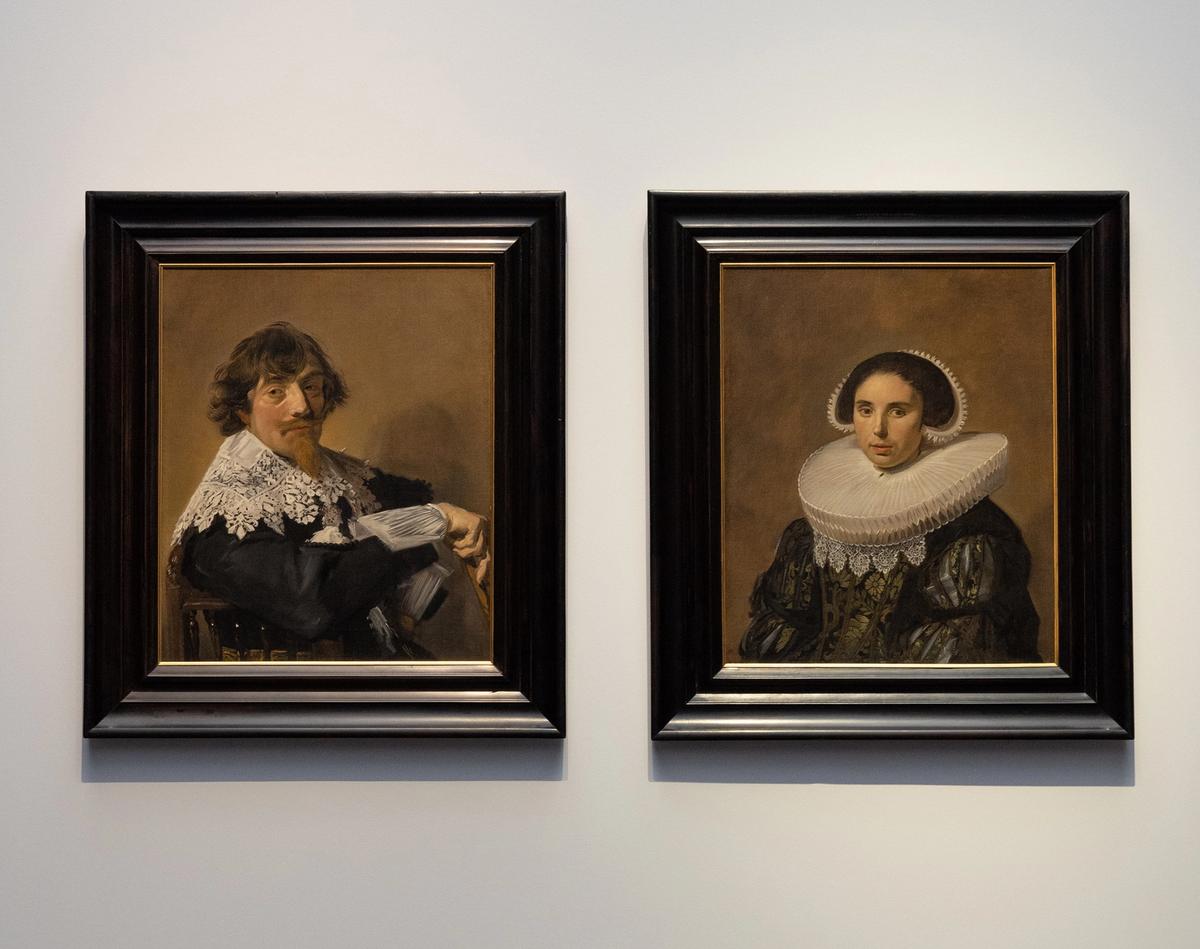When Amsterdam’s militia of the early 17th century fell out with the Haarlem painter employed to make their portrait—a middle-aged man called Frans Hals—two canny newlyweds made the most of a break in his timetable.
Researchers at the Rijksmuseum in Amsterdam have revealed that a pair of pendant marital portraits painted by celebrated portraitist Hals in around 1637 was of the seven-times mayor of Amsterdam Jan van de Poll and his wife Duifje van Gerwen.
Hals had run into trouble with a large portrait of Amsterdam’s militia he had begun in 1633 because he was too busy to travel, and many of the militia were apparently unwilling to take the three-hour barge to sit for him in Haarlem. So, while an Amsterdam-based painter, Pieter Codde, finished up the painting—titled The Meagre Company—in 1637, the wily van de Poll and van Gerwen “apparently took advantage of this gap in Hal’s calendar”, according to the Rijksmuseum.
Van de Poll, who lived from 1597 to 1678 and Van Gerwen, born in 1618, got married in 1637. He was a mayor of Amsterdam who would reach the highest rank as colonel in the city militia; she was the youngest daughter of a wealthy wine dealer, and would die at 40.
They were identified when Rijksmuseum researchers compared the man’s image to two other portraits, one by Johann Spilberk in 1650 and another by Bartholomeus van der Helst in 1653.
Dr Jonathan Bikker, curator of 17th century Dutch painting at the Rijksmuseum, said that he had long disputed the original attribution of the sitters in the two paintings, which entered the museum in a 1885 bequest. The sitters had been labelled as Nicolaes Hasselaer and Sara Wolphaerts van Diemen. “I found some documents that absolutely ruled that out, so I started looking at who it could be… through the entire line of inheritance,” he said. “The problem was that [Van de Poll and Van Gerwen] were Amsterdam citizens and I didn’t see the connection with Frans Hals.”
When asked to look at the identities again for a current Hals exhibition, he realised that van Gerwen’s uncle, Willem Warmond, had moved to Haarlem and appeared as a captain in a group portrait of Haarlem militia painted by Hals a decade earlier. “Rembrandt had stopped painting portraits in 1635, and he was the most sought after portraitist. So when you think about it, Hals was a very good choice.”
Hals was born in Antwerp around 1582 and fled with his parents to Haarlem as a child. The head of collections at the Frans Hals Museum, Marrigje Rikken, believes that he may have occasionally been employed by Amsterdammers for his keener price. “Amsterdam Meagre Company asked for Hals, we think because [he was cheaper],” she said at a press opening in February. “But there was a quarrel so they summoned him via a notary to come…they even raised the price… but in the end they asked another painter from Amsterdam to finish it.”
The pendant portraits he apparently made instead will be on display at the Rijksmuseum until Sunday 9 June and then move to Berlin’s Gemäldegalerie for its exhibition on Hals and his contemporaries.


